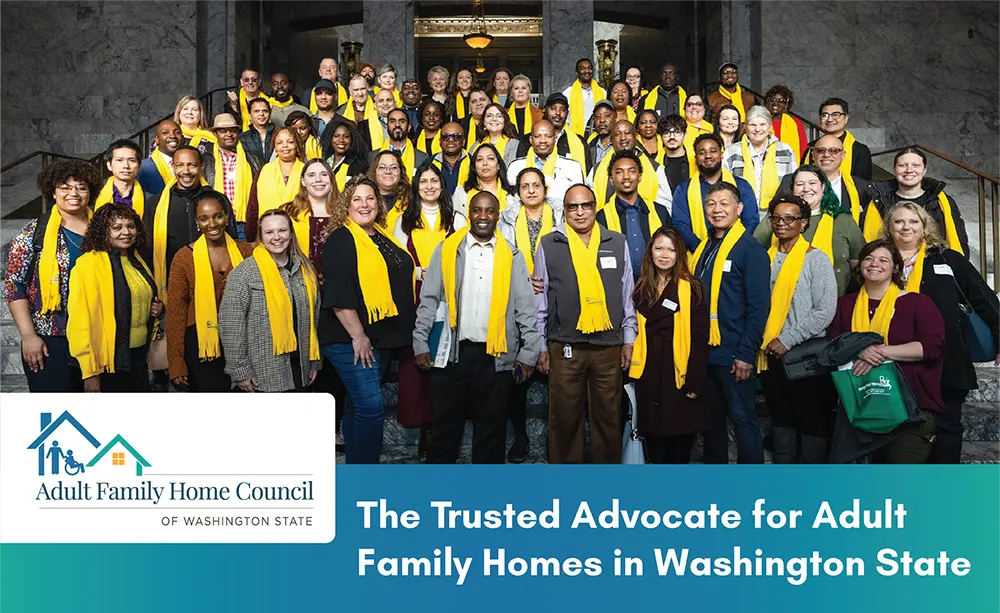
There's a WAC for That!
Emergency Evacuation Drills — Are You Ready to Evacuate in Under 5 Minutes?
Another hot spot on RCS’s Top 10 Areas of Non-Compliance is making waves: emergency evacuation drills. Despite their critical role in resident safety, many adult family homes are falling short of the Washington Administrative Code (WAC) requirements. So, the big question is—can you evacuate your residents in five minutes or less?
Let’s break down what the WAC says and what you need to do to stay compliant.
🔥Two Types of Drills You Must Know
- Full Evacuation
Residents evacuate to a designated safe location outside the home. Evacuate to the meeting place as indicated on your floor plan. - Partial Evacuation
Residents evacuate to a designated emergency exit within the home. Evacuate to the egress EXIT/threshold of the door.
📅Drill Frequency Requirements
- Partial Drills:
Must occur at least every 60 days at random staffing shifts and times of day/night.
➤ Each resident must participate in at least one partial drill per calendar year. - *Full Drills:
Must occur at least once per calendar year, with all residents participating together. - No Residents? No Excuse!
Drills must still be conducted even if the home is temporarily unoccupied, this ensures staff are always prepared.
🧾 Resident Refusals: Respect and Responsibility
Residents have the right to refuse participation in drills. But that doesn’t mean you’re off the hook:
- Document the preference to refuse in the negotiated care plan.
- Provide an estimated evacuation time for that resident.
- Add the estimate to the drill log to ensure the total evacuation time stays under five minutes.
📝 Documentation Checklist (WAC 388-76-10900)
Residents have the right to refuse participation in drills. But that doesn’t mean you’re off the hook:
- ✅ Names of residents and staff involved
- ✅ Name of the person conducting the drill
- ✅ Date and time
- ✅ Type of drill (full or partial)
🚨 Why It Matters
In an emergency, every second counts. These drills aren’t just a checkbox—they’re a lifeline. Ensuring your team is ready and your documentation is airtight could make all the difference when it matters most.
Stay tuned for more TAWFT insights—and let’s keep raising the bar for resident safety and compliance!
📃Resources
Related WAC
WAC 388-76-10895
Emergency evacuation drills—Frequency and participation.
(1) There are two types of emergency evacuation drills:
(a) A full evacuation is evacuation from the home to the designated safe location; and
(b) A partial evacuation is evacuation to the designated emergency exit.
(2) The adult family home must conduct:
(a) Partial emergency evacuation drills which occur during random staffing shifts at least every sixty days, with each resident participating in at least one each calendar year;
(b) A full emergency evacuation drill at least once each calendar year, with all residents participating in the drill together and at the same time; and
(c) Emergency evacuation drills even if there are no residents living in the home for the purpose of staff practice.
(3) The home must respect the resident’s right to refuse to participate in emergency evacuation drills. However, the home must still demonstrate the ability to safely evacuate all residents doing the following:
(a) Documenting the resident’s wish to refuse to participate in the negotiated care plan;
(b) Providing an estimate of the amount of time it would take to evacuate the resident and how they calculated this estimate in the negotiated care plan;
(c) Adding the estimated time to the time recorded on the emergency evacuation drill log after each drill to ensure the length of time to evacuate does not exceed five minutes; and
(d) Continuing to offer the resident a chance to participate in every evacuation drill.
WAC 388-76-10900
Documentation of emergency evacuation drills—Required.
The adult family home must document the following for all emergency evacuation drills:
(1) Names of each resident and staff involved in the drill;
(2) Name of the person conducting the drill;
(3) Date and time of the drill;
(4) Whether the drill was a full or partial emergency evacuation; and
(5) The length of time it took to complete the evacuation.
Not a Member Yet?
Membership fees enable the Council to cover legal expenses and fund staff to advocate with the state and regulatory agencies. The participation of every adult family home is vital to ensuring fair regulations and rates that accurately reflect the costs of caring for our vulnerable adults. Consider becoming a member of the Council to help us continue improving conditions for all adult family homes in Washington State.

